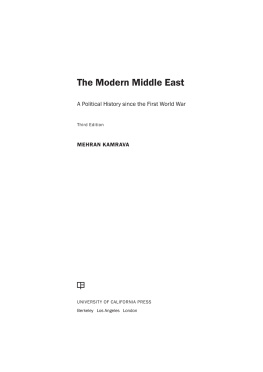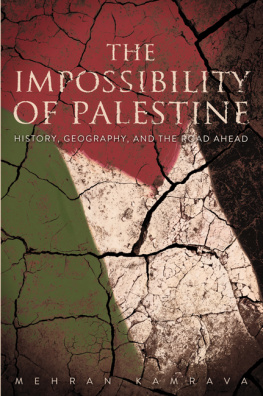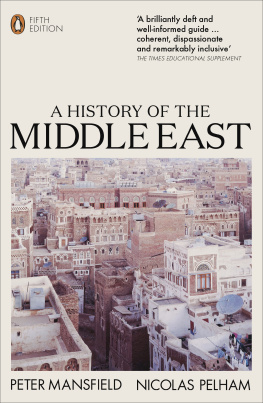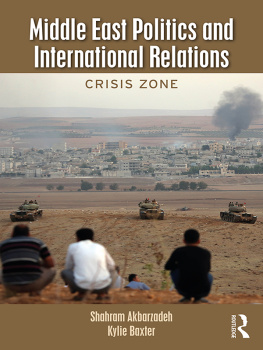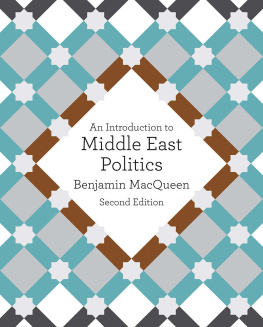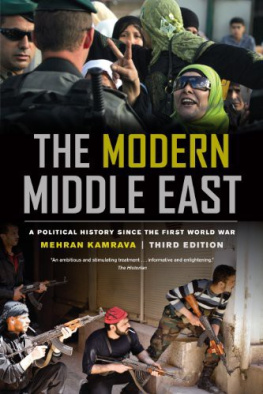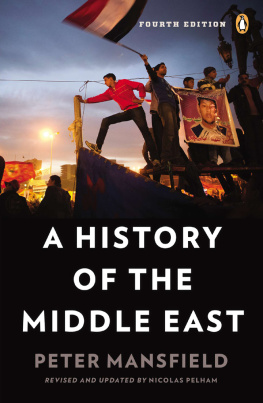
THE MODERN MIDDLE EAST
PRAISE FOR PREVIOUS EDITIONS OF THE MODERN MIDDLE EAST
An outstanding textbook on the modern Middle East. Kamravas writing is straightforward and lucid.
Digest of Middle East Studies
This is an ambitious and stimulating treatment of the modern Middle East. It is both informative and enlightening.
The Historian
... an in-depth analysis of a variety of issues that have plagued this part of the world for so many years.
Mahmood Monshipouri, author of Islamism, Secularism, and Human Rights in the Middle East
At a time when sensational books on the Middle East fill the market, this is a serious and sober contribution. Kamrava approaches the highly charged emotional issues of the Middle East with sensitivity and objectivity. He should be commended for a very useful and highly needed book.
Asad AbuKhalil, author of The Battle for Saudi Arabia: Royalty, Fundamentalism, and Global Power
Kamrava has written a very well-researched, accessible, and up-to-date book. His themes are well chosen; his analysis is cogent and lucid. It is a welcome addition to the literature on Middle East politics.
Manochehr Dorraj, author of Middle East at the Crossroads
The Modern Middle East
A Political History since the First World War
Third Edition
MEHRAN KAMRAVA

UNIVERSITY OF CALIFORNIA PRESS
BerkeleyLos AngelesLondon
University of California Press, one of the most distinguished university presses in the United States, enriches lives around the world by advancing scholarship in the humanities, social sciences, and natural sciences. Its activities are supported by the UC Press Foundation and by philanthropic contributions from individuals and institutions. For more information, visit www.ucpress.edu.
University of California Press
Berkeley and Los Angeles, California
University of California Press, Ltd.
London, England
2013 by The Regents of the University of California
Library of Congress Cataloging-in-Publication Data
Kamrava, Mehran, 1964
The modern Middle East : a political history since the First World War / Mehran Kamrava.Third edition.
pagescm
Includes bibliographical references and index.
ISBN 978-0-520-27780-9 (cloth : acid-free paper)
ISBN 978-0-520-27781-6 (paper : acid-free paper)
ISBN 978-0-520-95685-8 (ebook)
1. Middle EastHistory20th century.2. Middle EastHistory21st century.3. Middle EastPolitics and government20th century.4. Middle EastPolitics and government21st century.I. Title.
DS62.8.K3662013
956.04dc232013018594
Manufactured in the United States of America
22 21 20 19 18 17 16 15 14 13
10 9 8 7 6 5 4 3 2 1
In keeping with a commitment to support environmentally responsible and sustainable printing practices, UC Press has printed this book on Natures Natural, a fiber that contains 30% post-consumer waste and meets the minimum requirements of ANSI/NISO Z 39.48-1992 ( R 1997) ( Permanence of Paper ).
To Melisa, Dilara, and Kendra
Contents
Illustrations
Maps
Tables
Acknowledgments to the First Edition
The research and writing of this book would not have been possible without the kindness and generosity of a number of individuals. I greatly benefited from the research assistance of Annmarie Hunter and Emily Smurthwaite. I am most grateful for their diligence and their enthusiasm for this project from start to finish. Terrence Thorpe, another outstanding student, also read several chapters and gave valuable suggestions. Bradford Dillman, Manochehr Dorraj, Nader Entessar, Mark Gasiorowski, Nikki Keddie, and Mahmood Monshipouri kindly read all or some of the chapters and gave invaluable and insightful advice. Of course, any omissions or shortcomings remain entirely my fault. Work on chapter 8 [chapter 10 in the third edition] was partly funded by a generous grant from the College of Social and Behavioral Sciences at California State University, Northridge.
This book is the outgrowth of more than a decade of teaching and lecturing on the politics and history of the Middle East. In the process, I have learned a great deal from the innumerable students who have shared with me their insights, experiences, criticisms, and comments. Both directly and indirectly, their input is no doubt reflected here. For that, I am grateful.
Chapter 9 [chapter 8 in the third edition] is an expanded, much revised version of an article that originally appeared in Third World Quarterly, vol. 19, no. 1, 1998, pp. 6385. I am grateful to TWQ s editor, Shahid Qadir, for permission to quote extensively from the article here.
My wife, Melisa anli, deserves special thanks. Over the nearly five years that it took to write this book, she put up with my many solitary hours behind the computer, my frequent mood swings, and my far-too-frequent frowns. All along, she never wavered in her loving support for my work. As I was in the final stages of preparing the book, she gave birth to our beautiful daughter, Dilara. As a meager token of my love and gratitude, I dedicate this book to them both.
Acknowledgments to the Second Edition
Some five years after its original publication, the book continues to benefit from the input and advice of many colleagues and research assistants who helped with its original inception and its subsequent publication back in 2005. In the intervening years, countless friends and associates, and at times anonymous readers, have pointed out various ways in which the first edition could be improved upon. I am thankful for their input, their constructive criticisms, and their suggestions for improvement. I have been extremely fortunate to work with Naomi Schneider, my editor at the University of California Press, whose guidance, encouragement, and patience with delays were tremendously helpful in shaping the second edition. Grateful acknowledgment also goes to Simone Popperl, my superb research assistant on this book, especially for her help with updates to many of the tables appearing throughout the manuscript.
Any project of this magnitude is a product of love, and I have been extremely fortunate to be surrounded by a most loving family who selflessly gave me the time and the peace and quiet needed to complete work on this edition. My wife Melisa and our daughters, Dilara and Kendra, always provided the loving support and the emotional nourishment that I needed to work. For that, and for much more that cannot be adequately expressed in words, I dedicate this book to them.
Acknowledgments to the Third Edition
The current edition has benefited from the continued feedback of a number of colleagues and scholars, some of whom have read the book out of interest and many of whom have assigned it to their courses on Middle Eastern history and politics. I am particularly grateful to Murat Bayar, Gamze Cavdar, Steve Ceccoli, John Copp, Eugene Cruz-Uribe, Kareem Mahmoud Kamel, Tugrul Keskin, Bessma Momani, and Mahmood Monshipouri for providing invaluable feedback on improvements to be made to the second edition. Whatever shortcomings remain in the book are, of course, my own responsibility. Over the years, the research that has gone into this book has benefited from the labor of a number of exceptional research assistants. For this edition I was lucky to work with Dwaa Osman and Sana Jamal, both of whom worked meticulously on many of the tables and collected much of the data that appear in the book. Naomi Schneider, my editor at the University of California Press, remains by far one of the most wonderful professionals in the publishing industry with whom I have ever worked.
Next page
